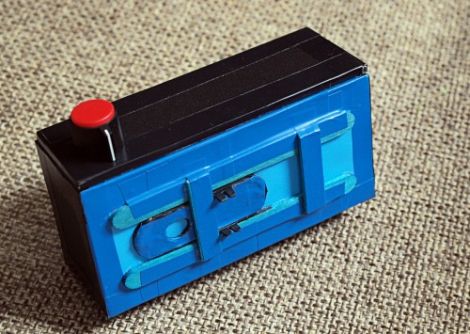
While it seems that the digital camera is king, some people still love shooting with good old 35mm film – [Costas Kaounas], a high school teacher and photographer certainly does. He recently published plans for a great-looking 35mm pinhole camera over at DIY photography that we thought you might enjoy.
[Costas] put together a set of simple hand-drawn plans for the camera, that you can easily replicate with a bit of free time. The camera is built mostly from card stock, both in 1mm and 3mm flavors, also incorporating popsicle sticks and an aluminum can. The popsicle sticks are used to create a manual shutter for the camera, while the pop can is used to form the pinhole aperture.
It’s a pretty simple hack as you can see, with nary an electronic part to be found. It will take you a bit of time to construct however, since you’ll need to let the glue dry between certain steps.
Love it or leave it, you’ve got to admit that the panoramic shots it takes are pretty nice!
If we’ve piqued your interest in pinhole cameras, be sure to check out this Lego pinhole camera as well as this beer can pinhole camera.
[via Lifehacker]















Yes this is copied from the site, but it’s a comment i made and i’ve tidied it up.
If you don’t feel like making the whole camera from scratch an old 6×9 (6×6 would work as well but not as dramatically) medium format folding camera is a good candidate. You can normally find them cheap on eBay or a car boot sale (flea market is the American term i think); since you don’t need the lens or a working shutter you shouldn’t have to spend a lot, even go out of your way to find a broken one.
* Remove the lens, and struts holding the bed to the body, use some sturdy pliers to twist and pry them off.
* Keep the bellows if they are in decent condition.
* Drill a hole in the center of the front lid for the pinhole lens, you can buy pinholes or make one.
* Close the lid and stick it in place to the body with tape, blu-tack or glue etc.
* If you kept the bellows stick them around the pinhole for extra light proofing.
Tricky part is making a good shutter, though you can just use a piece of tape as a shutter if you want. I found this page with links to various shutter designs for pinhole cameras, http://home.online.no/~gjon/pinhole_shutters.htm
Now you have a very wide angle pinhole camera.
If you however don’t want to use medium format film you can make some 35mm cassette holders for medium format cameras from old 120 spools (i found Fuji spools work best for this), stick them in the back and you have wide angle, panoramic 35mm camera, takes 24x90mm shots on a 6×9 body; and you can still use it with medium format as well if you want.
I think you can buy the 120 to 35mm cassette things but i made them, not my image but you can do it like this, http://www.flickr.com/photos/nefotografas/3361366374/sizes/o/in/photostream/
Though if you want a panoramic without the wide angle you can just use the 120 to 35mm converter spools in a medium format body without any modification to the camera.
I’ve mad pinhole cameras from oatmeal boxes, as this guy did here: http://users.rcn.com/stewoody/
I still shoot 35 on occasion, and this is ‘way too straightforward a project to pass up. With my wife’s crafts stockpile, I can pretty much get started without need to leave the house.
Thinking ahead… now that we’ve got so many thrashed point-n-shoot digitals lying around, can this project also provide a body for a next-gen multi-ccd pinhole panorama? Just for starters, the inability to butt the sensors against each other is an issue. I don’t know if there’s enough of a parallax problem for more distant subjects that you couldn’t “solve” the sensor gap by stacking several bodies, each with a sensor to placed to cover a different fraction of the arc. Or, would the images not be able to stitch cleanly?